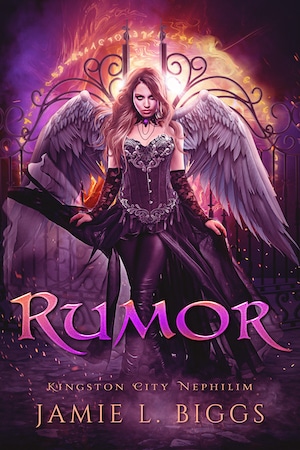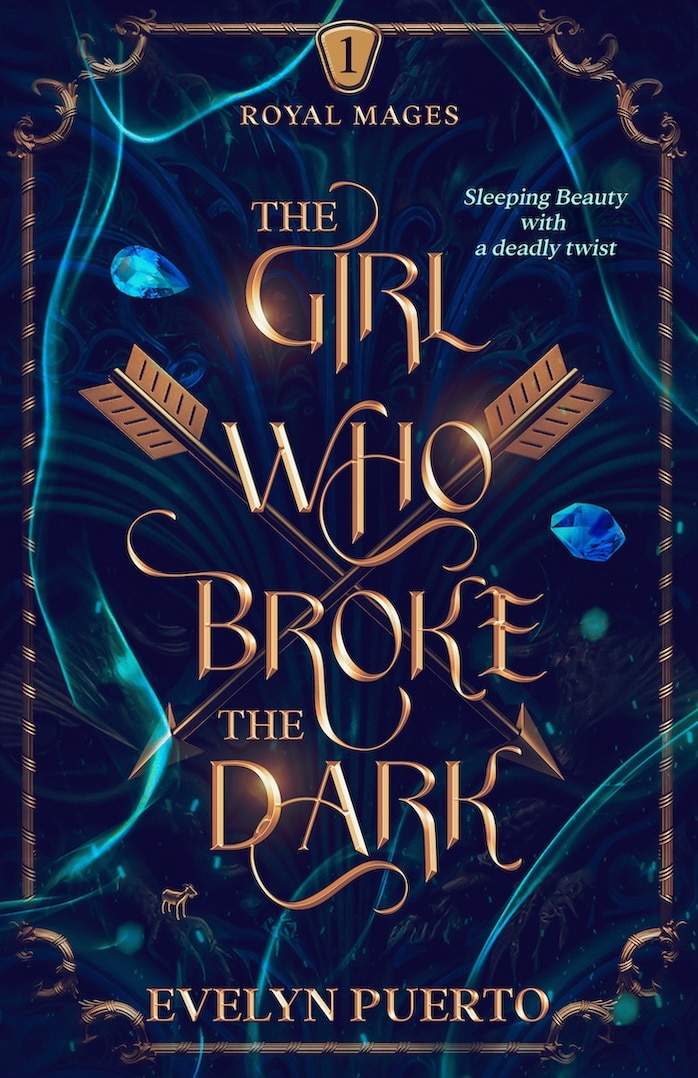Do you know what a logline is? If you’re not a screenwriter, chances are good that you don’t. And that’s a shame, because loglines are great tools for any writer.
Allow me to enlighten you. A logline is a very brief summary that gets across your story in the smallest possible space.
Most importantly, when you story starts to get confusing and messy, loglines can help you get your story back on track.
What Is a Logline?
Loglines are mainly used in Hollywood as a way to market screenplays to executives, but you don’t have to be a screenwriter to use a logline. I’ve taught all sorts of fiction writers how to use these little single-sentence wonders. You can use them for novels, short stories, video games, and even operas if you’re into that sort of thing. If it has a story, you can write a logline for it.
To give you a quick idea of what a logline looks like, here’s one for one of my stories:
A newbie pastor gets into unexpected trouble with the domineering church board when he and his wife decide to adopt a child.
Here’s a breakdown of the logline: A logline should contain a protagonist (newbie pastor), an antagonist (domineering church board), a situation (the trouble over adoption), and a goal (adopt the child).
There are all sorts of nuances to crafting a logline. I encourage you to explore on your own later and see what you can find. For today, though, we’re going to talk about how you can use a logline to keep a story on track.
Loglines Help You Stay on Track
When your story just isn’t clicking for some reason, you can write a logline to get down to the heart of what’s important. Then compare your logline to where you’re taking the story and see if it measures up.
I did this with a screenplay I wrote called The Portal. After I wrote a first draft, I felt like something wasn’t quite right. Time for a logline. Here’s what I came up with:
Stumbling on a portal and fleeing through it to escape trouble at home, a rebellious teen is forced to return and reconcile with his family to obtain the one item he needs to capture a crime lord from a parallel universe.
When I got it all laid out in a single sentence like that, I realized something: Despite what the logline claimed, my story was not about this rebellious teen. When I looked back at my draft, I found that the teen disappeared within ten pages. He was replaced by three kids who discovered his portal and eventually teamed up with him. The story belonged to the kids, but they weren’t even in the logline.
Armed with that information, I rewrote my logline like this:
When three kids find a portal to another dimension and release a vengeful crime lord, they must join forces with the portal’s rebellious creator to set things right.
With that better direction, I am now re-working the story to focus on the true main characters instead of spending so much time on somebody who’s playing a supporting role. I finally feel like this story is going somewhere, and it’s all due to my trusty logline.
Have you ever used loglines in your writing? Did they help you get to the core of your story?
PRACTICE
Write a logline for your work in progress, and share it in the comments section.
Then, check it against what you’ve actually written. Does your logline match your story? Why or why not?




Nice post! I hadn’t ever heard of a logline before, but it’s sort of like returning to the thesis of your essay. I find myself doing things like this often when I’m writing blog posts and articles because I tend to wander off into the details instead of sticking to my original idea. I stop my rambling and write out the point or subpoint I’m trying to make, and I find my way back to the main idea.
Loglines are the mission statement of the project. From the logline, the writer develops a detailed “storyboard,” with characters, scenes, action and plot worked out in greater detail.
Checking back on the logline is like a Board of Directors comparing their Goals and Objectives with the Mission Statement, keeping their decisions on track.
Ooh, that’s a good thought right there.
“A
comedian tries to kill himself.” That logline for an as-yet-unpublished novel was successful as far as attracting the attention of an agent. It doesn’t have everything a logline should have, but it’s got tension. It’s memorable and repeatable. Someone reminded me, once, that these loglines are going to be shared around the office (upstairs), so the easier it is to re-blurb, the better.
It’s true that you are missing some pieces, but I actually like it more because of it’s compression. So much irony there.
This sounds like a good story – I’m hooked immediately.
Very intriguing. I like the simplicity. It also feeds my suspicion that many comedians have some very deep hurts that they try to medicate with humor.
This is so true. They hide the hurt with laughter and jokes.
It has a protagonist — comedian
an antagonist — himself
a situation — desire and attempt at suicide
and a goal — to commit suicide
According to the definition in this post, looks like a classic logline to me.
Thanks, Rachelle… now why hasn’t this novel been snapped up by a publisher? My agent loves it. He blames the so very conservative mood in the publishing industry. At times like these, it`s good to remember that publishers turned down Harry Potter, too. Patience, PJ, patience.
This totally works. My first thought after reading that was “I want to know more.”
Logical logophile gets caught in logjam on the quest for logline. Sigh. True story.
That’s hilarious, Heather! I wonder if this logophile needs to stop being so logical.
This made me “lol”. That, of course, stands for “log out loud”.
Ha! Good one, Brian.
hehehe. good one. But, where’s the story?
Pffffffffffffffffffffffftt!!! (That’s how I laugh.) LOLrz!
Never used a logline (didn’t know they existed) but had completed a one sentence synopsis:
A shy temperance bar owner has to overcome many obstacles
with the police and community when she decides to investigate heroin addict
friend’s suspicious death.
I had never heard of one before either but had tried to distill my story into a sentence or two. Your synopsis made me chuckle a shy bar owner sounds like a good opportunity for humor and awkward moments!
Here’s what I came up with for my novel-in-progress. I wish I had done this years ago. It might have saved me a major re-write and several episodes of writer’s block.
13-year-old Tyler Colton attempts to make sense of family
secrets while growing up near a rural interstate exit where his single alcoholic
dad runs a gas station next to a XXX adult arcade.
Tyler’s childhood’s going to be interesting. Haha. Nice.
I thought the same thing Tom! Wish I had known how to focus my story a little better from the beginning. Your story sounds gritty and like an opportunity ripe for redemption!
PJ doesn’t think his has enough. Mine has too much, but I don’t know where to cut.
Theodosia Epperson must assure that her family’s Suwannee River estate and associated rights and responsibilities are passed on, intact, to her heir. But when her granddaughter discovers Dosia’s husband’s bones on the property, murder is added to the legacy.
Thanks for this post. I’ve been working on loglines for 4 of my novel ideas, but I can never whittle them down enough. Using your simple trick, this is the shortest I’ve been able to get one, but it still needs work:
Callen, a seventeen-year old small town artist, receives the diagnosis of a rare medical condition that will result in blindness. The diagnosis also reveals Callen’s estranged dad is not her biological father, so Callen travels to the white sands of Destin, Florida and risks a race against time and an unknown group shadowing her to discover the answers to secrets left behind after her mother’s mysterious death.
Thanks for giving it a shot, Kristin! I always find longer ones easier to whittle down. Here’s my crack at this one. I may get some details wrong, but perhaps it will give you a decent starting point.
When a seventeen-year-old artist is diagnosed with a medical condition that will leave her blind, she discovers her estranged dad is not her biological father and goes on a search to uncover the secret behind her mother’s mysterious death.
That one’s pretty clunky, but it’s a draft that I would use to start whittling.
Spectacular in both the literal and colloquial senses of the word. I can’t wait for it.
Great idea for identifying the core idea. This can also help writers struggling to write that arch-nemesis: The Synopsis.
Cool stuff. Sort of sounds like an elevator pitch. Never thought to use it as a reference point to keep a story on track though, good call.
Let’s see.
A soldier turns on his friend and commanding officer to save someone she plans to turn over for execution. It’s Jesus. And also an alien.
….
I may need to work on this.
…and also, in the end it’s all a dream?
In the end it turns out to be a virtual reality program run by Satan from his Moon Palace.
So yeah, it’s basically all a dream.
So you’re saying Satan doesn’t really have a Moon Palace.
Damn.
HA!
Wooo, Jack, you hooked me!
Thanks. I hope to get it published soon. If you’re interested check out my site 100Stories100Weeks.com. I post a new short story every Sunday. Sadly, they’re not all about alien Jesus.
So, the soldier is turning on the friend/officer to save Jesus and an alien from being executed? Interesting.
I don’t know if this is any good, but here it goes:
When the Mexican Revolution is over, newly-weds Carmen and Carlos move to New York City in search of a better life.
Fourteen-year-old Savannah’s ambitions are put on hold when she sustains a severe concussion.
I identify with this. I could get into this. I thumb-up this. 🙂
An alcoholic former sheriff finds himself in his struggle to bring the man who murdered his wife and unborn child to justice.
The world needs this book. When this book comes out, I am taking a TARDIS to Barnes & Noble so I’ll be the first one there and nothing will stand in my way of reading this sure to be extraordinary prose. Please publish when finished.
This is a very helpful tip. Thanks! 🙂
Here’s my practice:
Luke, a priest of the order of blood and bones, is tasked to hunt down a demonite that’s been murdering civilians.
Thank you, Jordan Smith! I’d heard of loglines before, but never thought to apply that principle to non-screenplay/script writing. And as it turns out, I needed to do this today; I was writing a piece this morning that was getting away from me and I wasn’t sure how to reel it back in. Now I know how to start reeling.
Oh, and here’s my logline:
An average-in-every-way middle aged man has to figure out what to do with the recently acquired knowledge that he’s the subject of a glossy gossip magazine published by his wife.
I could get hooked on this one Brian. Keep going.
Hey, thanks!
*rotates hand in beckoning fashion*
Go on…
When Jean finds out that she will be placed in a fatal situation if she helps Natalie out of her latest trouble, Jean comes to the difficult decision that she must end the relationship with her best friend Natalie.
I’ve never heard of a logline but I’ve heard of an elevator pitch. Thanks for introducing a new term, Jordan!
And I did write one. Not for my WIP but for my life…
Katie
Which was? Don’t leave us hangin’ Katie!
Sorry to disappoint but it ain’t gonna happen. 😉
A ten year old nerd stands between a warlord and a sacred talisman that confers great power. The nerd must die!
Wish I ‘d heard of this before the party last weekend, when I bored my nephew with waaaay too many words. Could have said the same thing with my new-fangled logline thingie. Sigh!
Wow, this logline business is fantastic. Thank you for the heads-up, Jordan. 🙂
Don’t tell Holden Caulfield I said this, but this sounds simply grand!
Vi believes in the common bond between women, the sisterhood, but through life’s bumps and bruises that view is challenged, Mrs. Kleinschmidt threatens to derail her belief in sisters, yet through the difficulties of life Vi’s sisters prove true and restore her faith.
***
This exercise proved more difficult than I thought it would! I think I may need to go back and evaluate some scenes in my book and do a little rewriting. With each post I realize I have so much to learn! This was great information though and a helpful tool to know how to use.
Hey there! This one gives me an opportunity to pass along a fundamental logline rule.
Don’t name names. Tell us who the characters are in a simple adjective-noun combo. Like these:
– Angry guitarist
– Righteous teen heartthrob
– Trigger-happy police officer
See how that gives us a glimpse into who the character actually is? You’ll want to think about how you can describe your character’s essence in just a few words. Every word counts in a logline!
Thanks for that help! I felt certain I hadn’t gotten it quite right. How’s this?
A young southern woman relies on her deep friendships to help her find meaning when the birth of her disabled baby and criticism from a cranky old lady invade her peaceful world.
Much better!
Spectacular.
A
conflicted Vietnamese spy tries to be true to himself and keep faith with those he loves despite
the tangled web of lies he lives.
(I don’t know if my profile is showing me correctly here… I’m the post author, Jordan Smith. Hi!)
One of the things I tell people a lot is to be concrete. Being true to yourself is good, but is there a specific action in your story that shows that? Same with a tangled web. What’s this guy doing that’s a lie? Tell us, because that’s your unique hook.
Hi Jordan. Thanks for the help. How’s this?A man who
can’t even say who his father is … Tran Van Thong must face up to the consequences of a lifetime of double-dealing as a Viet Cong and
American agent in the hotel rooms of pre-’75 Saigon to the aerospace factories
of Ronald Reagan’s California and a brown-stone in Manhattan before he can find
himself and keep faith with those he loves.
A man who
can’t even say who his father is … Tran Van Thong must face up to the consequences of a lifetime of double-dealing as a Viet Cong and
American agent in the hotel rooms of pre-’75 Saigon to the aerospace factories
of Ronald Reagan’s California and a brown-stone in Manhattan before he can find
himself and keep faith with those he loves.
Just read the bit about no names, that helps. I manage to get the log line shorter.
I have a question … getting the logline isn’t that difficult… but getting it to hook is a different thing. Your story might be compelling… but what if it’s one of those long slow things that can’t be encapsulate din a logline. What if your logline is accurate but doesn’t sing?
OK here is a shot at a logline for an wannabe book (not yet started and probably not a novel) – just playing… err… “practicing”.
The discerning horseback rider works tirelessly through the thick and thin, keeping her horse first and foremost in her never-ending quest for self-improvement.
Great post. I am going to start trying this. Thanks!
Great idea — simplification is always key to staying on task. It will help with marketing efforts too.
Let me try it out — A single mother needs to defeat a corrupt local sheriff in small town mayoral race in order to win custody of her son.
Mild mannered librarians go to any lengths, including murder, to keep their community from discovering their secrets.
LIke this one. Jane Austen?
Good exercise. I’ve been enjoying reading the various loglines. Here’s mine:
A bullied 13-year-old seeks to use his super-power freely and in public by joining a club of super-powered teens.
Good exercise. I’ve been enjoying reading the various loglines. Here’s mine:
A bullied 13-year-old seeks to use his super-power freely and in public by joining a club of super-powered teens.
What does he seek to do with his super power?
Misti, he seeks to use his powers for good, so he and other powered kids can make a difference. Thanks for asking. For more information, here’s a link to my recently published book: https://www.amazon.com/Power-Club-Greg-Gildersleeve-ebook/dp/B075XT21TW/ref=sr_1_1?ie=UTF8&qid=1513395112&sr=8-1&keywords=greg+gildersleeve
Logline is really a very good way that gets our story across in the smallest possible space. Sometimes even some Screenwriter are not aware of the logline fact. Loglines are very helpful to stay on track always. Anyways, thanks for the informative share.
An orphaned teenager and the granddaughter of a Cherokee princess travel lands and seas to reclaim missing treasure, get revenge, and stop a malicious doctor from watching the world burn.
With all life’s odds against him who would thought being sent away would be his miricle move of achiving lifes greatest prize love cars money fame LIFE